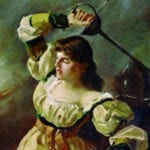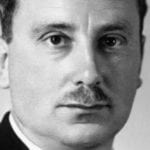 Mysteries
Mysteries  Mysteries
Mysteries  History
History 10 Surprising Stories About the Texas Rangers
 Humans
Humans 10 Philosophers Who Were Driven Mad by Their Own Theories
 Miscellaneous
Miscellaneous 10 Video-Game-Worthy Weapons and Armors from History
 Weird Stuff
Weird Stuff 10 Psychics Who Accurately Predicted Wartime Events
 The Arts
The Arts 10 Pieces of Art Inspired by a Broken Heart
 Health
Health 10 Science Fiction-Sounding New Medical Treatments
 History
History 10 Surprising Facts About the Father of Submarine Warfare
 Space
Space Ten Astonishing New Insights into Alien Worlds
 Weird Stuff
Weird Stuff 10 Bizarre Summer Solstice Rituals Still Practiced Today
 Mysteries
Mysteries Top 10 Haunting Facts About the Ghost Ship MV Alta
 History
History 10 Surprising Stories About the Texas Rangers
 Humans
Humans 10 Philosophers Who Were Driven Mad by Their Own Theories
Who's Behind Listverse?

Jamie Frater
Head Editor
Jamie founded Listverse due to an insatiable desire to share fascinating, obscure, and bizarre facts. He has been a guest speaker on numerous national radio and television stations and is a five time published author.
More About Us Miscellaneous
Miscellaneous 10 Video-Game-Worthy Weapons and Armors from History
 Weird Stuff
Weird Stuff 10 Psychics Who Accurately Predicted Wartime Events
 The Arts
The Arts 10 Pieces of Art Inspired by a Broken Heart
 Health
Health 10 Science Fiction-Sounding New Medical Treatments
 History
History 10 Surprising Facts About the Father of Submarine Warfare
 Space
Space Ten Astonishing New Insights into Alien Worlds
 Weird Stuff
Weird Stuff 10 Bizarre Summer Solstice Rituals Still Practiced Today
10 Amazing Women Who Fought The Nazis
Men aren’t the only ones able to fight in a war. We’ve already covered some of the incredible women who helped bring down Hitler’s regime. But that was just the tip of the iceberg—here are 10 more courageous women who fought against the Nazis, some by sheltering Jews or Allied soldiers, others by working with resistance organizations to commit acts of sabotage or gather intelligence. All displayed indomitable will and fearlessness in the face of almost certain death.
10Irena Sendler
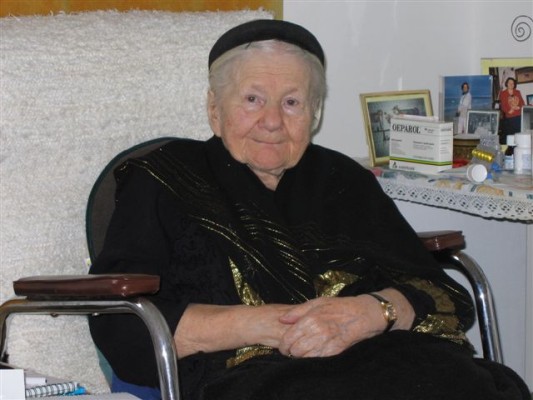
Irena Sendler’s heroic actions were forgotten by most of the world until 2000, when four girls at Uniontown High School in Kansas decided to research her life as part of a history assignment. Sendler was a Polish Catholic, and her surgeon father raised her to think of the Jewish people as equals. When the Nazis invaded in 1939, she was working as an administrator in the Warsaw Social Welfare Department, where homeless people and orphans were provided with food and shelter.
Sendler immediately decided, on her own initiative, to begin a covert mission to supply food, medicine, and money to any Jews in need of them. She knew this would be illegal under Nazi rule, so she signed the Jews up under Christian names. To keep the authorities away, she told them that anyone who was signed up to receive aid had highly infectious typhus. While the Jews lived under false identities, Sendler kept their real ones in jars buried under an apple tree in her neighbor’s yard.
Once the Warsaw Ghetto was established, the Jews inside began dying at a rate of 5,000 per month from starvation or disease. Sendler entered the ghetto daily disguised as a nurse, convincing Jewish parents to let her smuggle their children to safety. She is credited with personally saving the lives of 2,500 children, spiriting them out of the ghetto under false names and giving them to adoptive families, orphanages, and convents. She hid some in wheelbarrows full of clothes or food and gave one infant to a man to smuggle out in his toolbox. Others were taken out hidden in coffins and burlap potato sacks.
On October 20, 1943, the Gestapo finally figured out what Irena was up to and arrested her. They smashed her feet and legs until all the bones were broken, but she refused to divulge any names. They sentenced her to death, but her friends bribed one of the guards to let her go, and she spent the rest of the war in hiding. Afterward, she dug up the jars.
A year before her death, Irena was nominated for the 2007 Nobel Peace Prize.
9Marie-Madeleine Fourcade
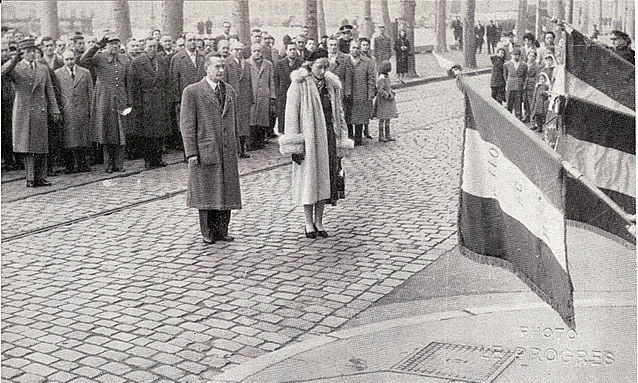
A secretary at a publishing company when the Nazis invaded France, Fourcade became one of the founding members of “the Alliance,” an underground resistance organization nicknamed “Noah’s Ark” because the members gave themselves animal codenames. Fourcade was “the Hedgehog.” The Alliance took it upon themselves to gather intelligence on the Nazis and pass it to the British. When the movement’s founder was arrested, Fourcade took over. While she directed the network, they managed to map the German fortifications along the Normandy coast in advance of the Allied invasion.
The Alliance’s operatives lived in constant peril of being captured and tortured as spies. Fourcade herself was captured twice. The first time, on November 10, 1942, she was betrayed by a double agent, but escaped to Switzerland, and then via plane to Britain. She directed the Alliance from London until, deciding that she could accomplish more on the ground, she reentered Nazi-occupied France to continue directing asymmetrical warfare against the Germans. She was captured again, but escaped and survived the war.
8Stefania Podgorska
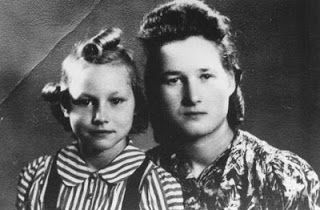
Podgorska was born in a small village in southeastern Poland in 1923. When she was 14 she moved to the nearby town of Przemysl and took a job working for a local family of Jewish grocers. When the Nazis invaded, her mother and brother were sent to a German labor camp and Stefania’s employers were confined to the ghetto, leaving her to care for her six-year-old sister. Then, in 1942, the Nazis began liquidating the Przemysl ghetto. Joe Diamant, the son of Stefania’s grocer boss before the war, was sent to a camp, but managed to escape by leaping from a moving train.
Alone and desperate, Joe found his way to Stefania, who agreed to hide him in her attic. Joe managed to get in touch with his remaining family and a number of Jews escaped the ghetto and took shelter with the Podgorska sisters. Stefania had to move to a nearby two-bedroom cottage to accommodate them all. There were eventually 13 Jews concealed with the Podgorskas, and Joe fashioned a makeshift false wall in the attic to hide them.
Two years later, the Germans took over a building across the street and converted it into a hospital, then started taking over apartments in the neighborhood. A German officer knocked on their door and told the Podgorska sisters that they had to leave within two hours. The Jews hiding with them urged them to go and save themselves, vowing not to be taken without a fight. After praying, however, Stefania claimed to have heard a woman’s voice urging her not to go. Her mind made up, Stefania decided to stay, even though she knew this risked her own life and that of her sister. When the officer returned, he cheerfully told Stefania that he would only need one room after all, and that she could carry on living in the other one. The officer stayed for seven months, completely unaware that 13 Jews were hiding just above his head.
Life continued in this way until Przemysl was liberated on July 27, 1944. Stefania never abandoned her refugees. She and Joe were married the next year.
7Halina Szymanska

In the years leading up to the war, Szymanska’s husband, Colonel Antoni Szymanski, was the last Polish military attache in Berlin. There the couple met Admiral Wilhelm Canaris, the head of German military intelligence. In the wake of Hitler’s invasion of Poland, Canaris helped Szymanska and her children escape to neutral Switzerland. Antoni would not be as lucky, being taken prisoner when the Soviets overran Lvov.
As it happened, Canaris, who despised Hitler and was horrified by the mass executions taking place in Poland, had been plotting against the Nazis for some time. After the German failure at Stalingrad, Canaris escalated his plans to overthrowing the entire Nazi party and having Hitler imprisoned as a madman. Throughout the war, he employed Szymanska as a liaison with the British in order to coordinate attacks against the Nazis. She and Canaris met on numerous occasions in Switzerland and Italy. In 1941, she personally passed on information from Canaris that the Germans were about to invade the Soviet Union.
Canaris later told her that the invasion had become bogged down against Soviet resistance. She also began working with Allen Dulles, who was later the first director of the CIA, and Hans Gisevius, a German intelligence officer who was involved in the July 20 bomb plot against Hitler. Throughout her life Szymanska declined to call what she did spying, preferring the term “calculated indiscretion.”
6Countess Andree de Jongh
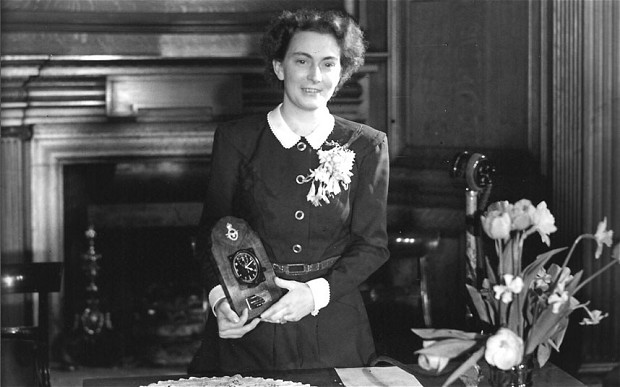
A well-educated Belgian nurse, de Jongh took a job with the Red Cross when the Germans invaded Belgium. She also undertook to aid Allied soldiers wherever possible, despite risking arrest by the SS. British soldiers who could not escape at Dunkirk went into hiding in safehouses throughout Brussels, and while tending to them, de Jongh made contact with enough sympathizers to set up an underground railroad through France to Spain.
De Jongh’s network soon became known as the Comet Line. The first 11 British soldiers to attempt escape via this route were captured by the Spanish, who sent nine back to German POW camps. Outraged, Andree decided to lead the next escape herself. Under her guidance, three British soldiers made it safely to the British consulate in Bilbao, Spain. Impressed, MI9, the department of British Intelligence devoted to rescuing soldiers from behind enemy lines, agreed to provide her with supplies and contacts. Over the next two years she personally led 33 expeditions through occupied territory from Belgium to Spain, repatriating more than 400 men.
She was captured in January 1943 and brutally tortured by the Gestapo, eventually confessing everything. Fortunately, the Nazis could not believe that a single woman was capable of such feats and decided not to execute her. She spent the rest of the war in the Ravensbruck and Mauthausen concentration camps, where she survived until liberation.
5Lisa Fittko

Born Erzsebet Eckstein in Ungvar, Ukraine, near the Hungarian border, Fittko’s family moved to Berlin when she was a young girl. In 1933, her parents saw Hitler for what he was and fled the country, but Fittko actually chose to remain in Berlin and work for the resistance, distributing anti-Nazi propaganda. She lived and worked in the back room of a candy shop, printing political leaflets while a record of Verdi’s Aida played loudly to cover the noise. She soon wound up on the Gestapo’s proscription list after failing to return Hitler’s salute at a Nazi rally—although Fittko herself claimed this was actually the result of a lapse in concentration rather than a political gesture, saying, “I was stupid, but not that stupid.”
She fled to Prague, where she continued her propaganda activities and married a fellow rebel, Hans Fittko. They were pursued doggedly by the Gestapo and fled first to Zurich, then to Amsterdam, all the while disseminating anti-Nazi literature and having it smuggled into Germany. In 1939, they fled to Paris, but when the war began the French arrested thousands of Germans and Austrians, including, ironically, the Fittkos, and interned them in hastily built camps around France.
The Fittkos wound up near the Spanish border and began forging documents to escape, succeeding in the chaos of Germany’s invasion of France. They could have fled for good into Spain, but they chose to remain in occupied France to rescue as many people as possible. Lisa personally blazed a trail through the Pyrenees into Spain, nearly becoming lost in the mountains on her first try. The escape route would end up saving hundreds of people. America sent Varian Fry, a Harvard professor, to assist with organizing escape plans, and he worked with the Fittkos to save many more—so many, in fact, that the Nazis took notice and America had to extract Fry to preserve relations with Germany, since the two were not yet at war. The French sent Fry back to America, but not before he helped the Fittkos escape onto a ship bound for Cuba in November 1941.
4Monica Wichfeld
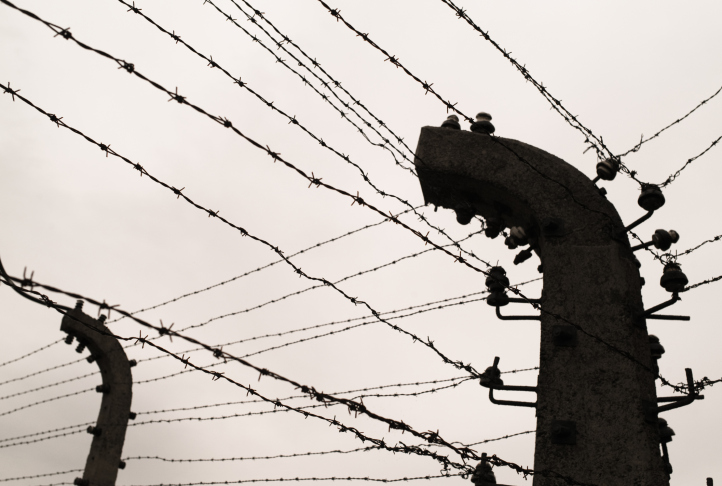
Wichfeld was born Monica Massy-Beresford in London, raised in Ireland, and married Dane Jorgen de Wichfeld in 1914. When the Nazis invaded Denmark in 1940, Monica was furious, since Hitler had had a non-aggression pact with Denmark at the time. She joined the Danish resistance and worked with them to harass the Wehrmacht at every turn. From 1940 to 1943, the resistance was non-violent, consisting of protests, propaganda distribution, and clandestine intelligence gathering. Wichfeld raised money for the establishment of a press to disseminate anti-Nazi literature. She also helped relay information about German numbers and weaponry to London. By the end of 1943, British commandos were airdropping explosives for the resistance to sabotage communications and supply lines.
By the autumn of 1943, acts of sabotage had become so rampant that the Nazis took control of the Danish government in order to hunt down the resistance. On October 1, Hitler ordered all Danish Jews arrested and deported to death camps, but the resistance learned of the plan and set about finding the Jews first and evacuating them to Sweden. Some 7,800 were rescued in this way. Only about 500 were captured and sent into imprisonment at Theresienstadt, in what is now the Czech Republic. This was a concentration and labor camp, but the death rate was not much less than that of the death camps. Inmates died primarily of disease, especially typhus, complicated by malnutrition. Many were beaten to death or executed. Of the 500 Danish Jews sent there, about 400 survived the war.
In May 1944, Wichfeld was betrayed by another Resistance member. When she refused to divulge any information about her comrades, the Nazis sentenced her to death. However, since no woman had been executed in Denmark for several hundred years, the Danish public nearly began a full-scale uprising, and the Nazis decided it would be easier if they simply imprisoned her. She died of pneumonia on February 27 of the next year.
3Magda Trocme

From the 1940 conquest of France until the end of the war, Magda and her husband, Protestant pastor Andre Trocme, convinced other local religious leaders and their congregations to harbor any Jews who fled into their area around the town of Le Chambon-sur-Lignon, in south-central France. From 1940 to 1944, when their part of France was finally liberated, about 5,000 Jews had passed through and been hidden by the townspeople. This was because Andre preached to them the importance of sheltering “the people of God,” citing Deuteronomy 19.
It was Magda who helped the first Jew to pass into the area, a woman who knocked on their door at night during a snowstorm. The safehouses throughout the town began receiving donations from multiple Jewish and Christian denominations, as well as secular charity organizations. When Andre was arrested in February 1943, Magda took over as manager of operations related to procuring food, medicine, clothes, and shelter for the Jews who kept pouring in for sanctuary. Andre was released a month later and immediately went into hiding with Magda, from where they continued to oversee the safety of the Jewish fugitives.
2Sophie Scholl

When the Nuremberg Laws were passed in 1935, 14-year-old Scholl was a student in southern Germany. A devout Lutheran, Scholl could not understand the Nazi hatred for non-Aryans. She was reprimanded in school for reading banned literature by the Jewish author Heinrich Heine. In 1937, her brothers were imprisoned for membership in the German Youth Movement, which publicly opposed Nazism. In 1942, after six months in the compulsory National Labor Service, she enrolled at the University of Munich, where she became involved in the White Rose Movement, which espoused non-violent non-cooperation with Nazism. That year, her father was imprisoned for calling Hitler “the scourge of God,” the same moniker given to Attila the Hun.
In late 1942 and early 1943, the White Rose composed six different anti-war leaflets and distributed them throughout Munich. The SS and Gestapo kept tight surveillance on all resistance in Germany’s cities, and it was only a matter of time before they traced the leaflets back to the University. On February 18, 1943, just days after the Sixth Army had fallen at Stalingrad, Sophie and her brother Hans were arrested and interrogated. Sophie’s leg was broken. She was then hauled into Roland Freisler’s People’s Court. Freisler was infamous for bellowing vitriol and insults at defendants throughout trials. He rarely found anyone not guilty.
Scholl had this to say: “Somebody, after all, had to make a start. What we wrote and said is also believed by many others. They just don’t dare express themselves as we did.” Scholl was allowed no attorney and no defense witnesses, and Freisler sentenced her to death by guillotine after a few hours. Her last words were: “How can we expect righteousness to prevail when there is hardly anyone willing to give himself up individually to a righteous cause. Such a fine, sunny day, and I have to go, but what does my death matter, if through us, thousands of people are awakened and stirred to action?” The courage she and Hans displayed impressed their guards, who treated them leniently. Freisler was killed in an Allied bombing raid two years later.
1Zoya Kosmodemyanskaya
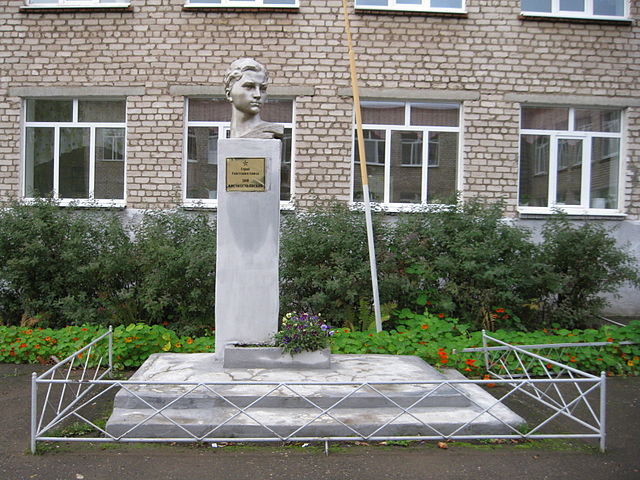
Kosmodemyanskaya was a high school student in Moscow when Germany invaded the Soviet Union in 1941. A model student, well-liked by her classmates and teachers, Zoya volunteered to join a guerrilla group in the wake of Operation Barbarossa. Her unit, Partisan 9903, was sent to carry out sabotage operations in enemy-occupied territory in what is now Belarus. Their job was to bring asymmetrical warfare to the Nazis, mining the roads and destroying telegraph and telephone poles. There were about 1,000 men and women in the unit, but only half survived the war.
On November 27, 1941, a squad was sent to burn down the village of Petrisheva, but their leader was captured and killed and the rest of the unit retreated. The next night, Zoya reentered Petrisheva alone and was captured after a local betrayed her location. The Germans tortured her for the entire night, so severely that a German officer could not tolerate her screams and left. Photos of her body after execution show the horrifying results of the torture. She stubbornly refused to give her real name or any useful information, and was paraded through the village the next morning with a sign that said “arsonist.”
Before she was hanged, she supposedly said: “You may hang me now but I am not alone. There are 200 million of us. You won’t hang everybody. I shall be avenged. Soldiers! Surrender before it is too late. Victory will be ours.” By the following February, she had been declared a Hero of the Soviet Union.
FlameHorse is a writer for Listverse.

